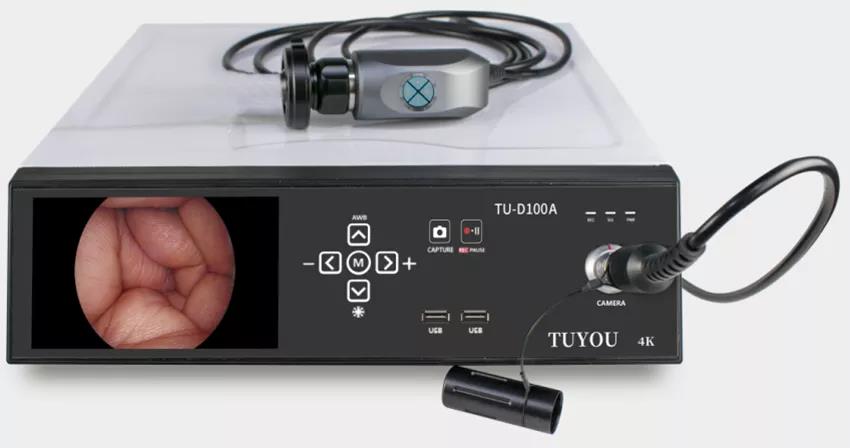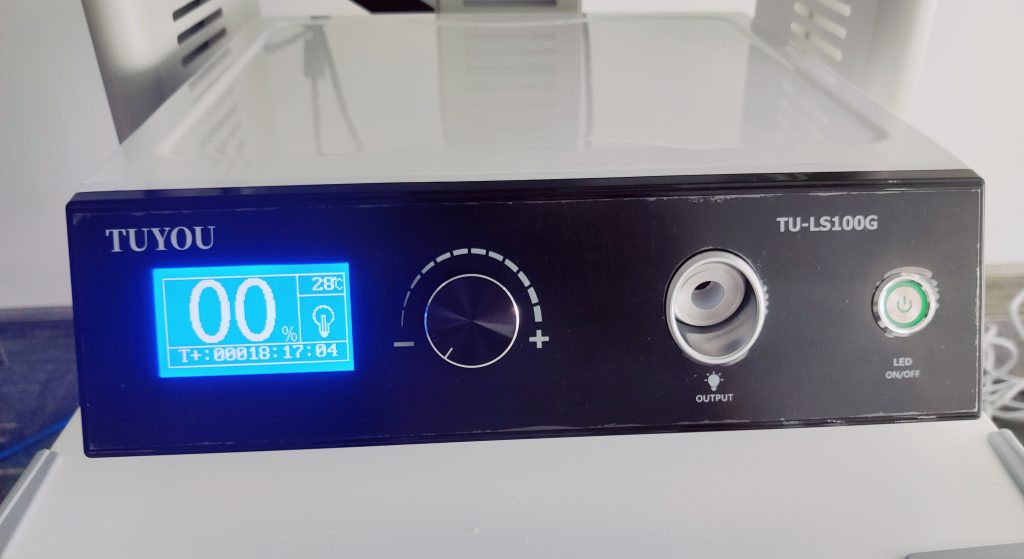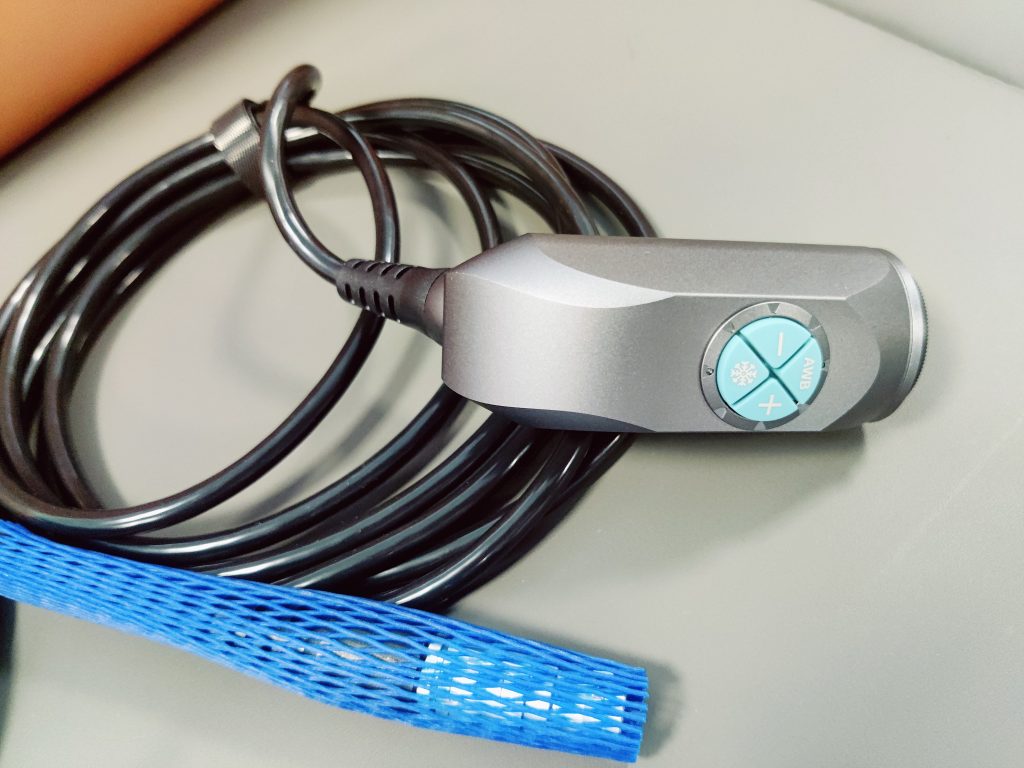Endoscopic surgery is a model of the application of high technology such as electronics, optics, and cameras in minimally invasive clinical disciplines. With the reform of the national medical system, the advancement of medical technology, and the popularization of advanced medical equipment, endoscope equipment systems are more and more widely used in hospitals at all levels. When the endoscope equipment system is applied to various clinical departments, it will get different names, such as: ventriculoscope, thoracoscope, hysteroscope, ureteroscope, prostate resectoscope, intervertebral discoscope, arthroscope, laparoscope and so on. Among them, laparoscopy and hysteroscopy are the most popular. Different from traditional surgery, it is performed in a closed cavity. Therefore, the quality of instruments and equipment directly affects the effect of surgery, and the correct use of instruments and equipment is also directly related to the smoothness and success of the operation. Now there are many brands of endoscopes in the domestic market, and the functional designs are different, but the basic principles are the same.
Composition of the system
The medical endoscope system is mainly composed of equipment system and surgical instrument system. Surgical instrument systems are mainly classified by department or surgery name. There are endoscopes, special instruments, surgical instruments and disposable surgical consumables used in various departments. I won’t go into details here, but here we mainly discuss the structure and composition of the equipment system.
In the equipment system, we can usually be divided into: camera imaging system, image recording system, light source system, artificial pneumoperitoneum system, liquid compression system, electrocoagulation and cutting system, dynamic ablation system, irrigation and suction system and so on.

Camera imaging system: The system includes a monitor and a camera. The display has two kinds of conventional CRT and liquid crystal, the camera has two kinds of single CCD/CMOS and 3CCD/CMOS. Now the high-end customers are mostly LCD monitors with 3CCD/CMOS cameras.
Image recording system: Many hospitals now choose computer-based graphic workstations. The system is divided into two parts: computer hardware and graphic acquisition software.
Light source system: also known as cold light source. The cold light source bulb is filled with halogen and xenon gas, and its output power is 70-400W. Now 300W xenon light source is the mainstream product. Its outstanding feature is that the light is strong, with a color temperature of 5600-6000k, similar to sunlight, covering the entire wavelength range from ultraviolet to infrared.

Artificial pneumoperitoneum system: connect the pneumoperitoneum machine to the carbon dioxide cylinder, unscrew the valve on the cylinder, and then turn on the pneumoperitoneum machine. According to the needs of the operation, select the pressure preset value. When the intra-abdominal pressure exceeds or falls At the set value, the fully automatic carbon dioxide insufflation machine can automatically start or stop insufflation.
Liquid pressurization system: systems such as joint pump, uterine distension pump and bladder pump are mainly used to pressurize liquid into a cavity, and then use instruments to perform surgery in the cavity.
Electrocoagulation and electrocution system: high-frequency electrocautery is often used in common open surgery and minimally invasive surgery.
- Power ablation system: Power planing systems and ion ablation knives are often used in sinusoscopy and arthroscopic surgery. Although these two devices are expensive, they greatly shorten the intraoperative time and reduce costs. risk of surgery.
Flushing suction system: The flushing flow rate of the equipment should be at least 1 L/min.
Common faults and maintenance methods of equipment systems
a. Common faults of camera imaging system
The image is disturbed. Generally, it is because the high-frequency equipment such as electric knife interferes with the line. At this time, we need to check whether the shielded wire between the camera and the connection is connected. Another situation is that interference stripes will appear when high-frequency equipment is not used. At this time, the shielding layer of the connecting line signal line is worn out due to long-term use. It depends on whether there is a problem with the connection of the camera or the aging of the entire wire. The former needs to be re-soldered, and the latter needs to be replaced. At present, the price of replacing the original imported 3m long connecting wire is about 10000RMB. Therefore, try to avoid the wire being run over by the instrument cart or surgical cart on the ground during use.
Image casts. When the color of the scene cannot be restored after white balance and excluding the influence of other supporting equipment, we believe that it may be caused by the aging signal transmission defect of the wire, or the aging and deterioration of the camera circuit components, or the aging of the camera CCD. . At this point, we only need to replace the corresponding accessories.
- The failure of the camera host is generally rare. If there is a software failure (program failure), you can only take it back to the manufacturer to replace the program chip.

b. Common faults of image recording system
The foot switch is malfunctioning.
The connection cable of the video screen is in poor contact.
Computer hardware failure.
System software or image acquisition software malfunction.
c. Common faults of light source system
Dim light. Except for the reason of the grating occlusion, it is basically certain that the bulb is approaching its service life, and a new bulb can be replaced. The service life of the xenon light bulb is generally designed to be 500 hours. If the light source system has a life timer device, this problem can be easily solved.
The power-on bulb does not light up. If the reason for burning the light bulb is ruled out, then the problem often lies in the high-voltage ignition circuit of the host, because when the machine is turned on, the machine will generate a pulsed high voltage of tens of thousands of volts, and the components will age very quickly. Note that you cannot use a multimeter to check the pulsed high voltage at this time.
d. Common faults of artificial pneumoperitoneum system
Incorrect pressure display. This is mostly because the gas pressure sensor is damaged. If the machine is designed with a group of multiple differential pressure sensors working at the same time, generally when one is aging or polluted and cannot work, we need to replace this group of sensors, otherwise only one of them will be replaced, and the other The sensor life of the same group is also close to critical.
- Flow is inaccurate. The gas flow sensor can be replaced if it is damaged. Sometimes the flow is calculated by the differential pressure, at this time we need to replace the new differential pressure sensor.
- Equipment leaks. In many cases, it is caused by the aging of the device sealing ring. However, there are also reasons for the leakage of the mechanical pressure reducing valve of the equipment and the damage of the solenoid valve, which is relatively easy to judge and repair.
e. Common faults of liquid pressurization system
Damaged peristaltic pump.
The liquid pressure sensor is damaged. The principle is basically the same as that of the gas pressure sensor.
Damage to the internal circuit of the device.
f. Common faults of power and ablation systems
The power system is mainly the wear of the planer head and the problem of the high-energy motor in the planer handle, and the replacement of the motor is selective, and not every motor has replacement parts. Therefore, special attention should be paid to protection during disinfection and use.
- Ablation system in surgical application is mainly the loss of the cutter head. The equipment failures are mostly circuit failures, generally starting from the output part.
g. Common faults of irrigation suction system
Insufficient pressure or suction. The two-way pump in the equipment is aging, or the negative pressure bottle is leaking.
- The equipment cannot be turned on. Generally, most of the liquid enters the equipment. It is enough to clean up the wrongly sucked liquid without burning the relevant parts.
Maintenance summary
In order to minimize the occurrence of equipment failures, a dedicated laparoscopic operating room should be set up to reduce the movement and damage of the instruments, and the specialist laparoscopic nurses should be assigned to use and maintain them. How to use it, strictly implement the operating procedures, and pay attention to the three links of preoperative inspection, intraoperative troubleshooting, and timely postoperative maintenance. If there is a problem with the equipment, the first is to take emergency maintenance, because this can solve the small and medium faults that account for about 85% of the faults. The most difficult problem to solve in the actual maintenance is the ordering of replacement parts. Manufacturers rarely sell accessories. If the equipment is damaged, it is better to deal with it, and you can directly find the manufacturer. At present, many hospitals also use domestic equipment. Some domestic equipment has reached or even exceeded foreign standards in terms of technology.




